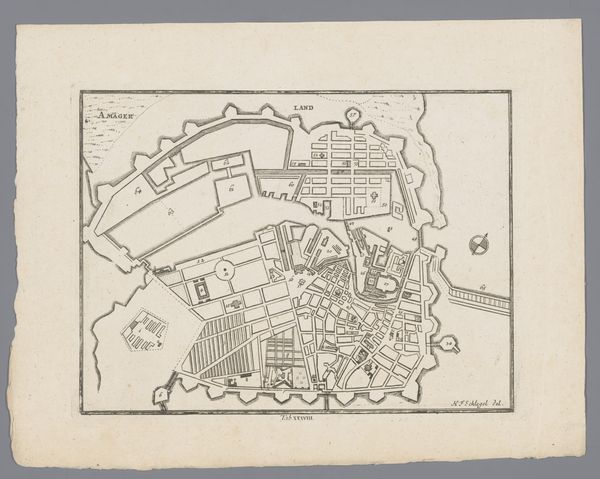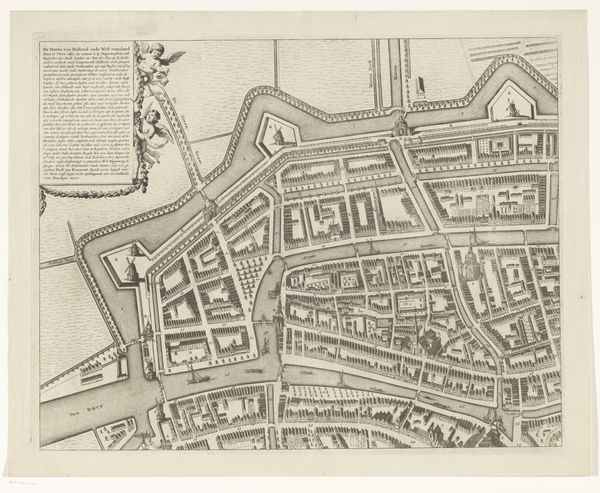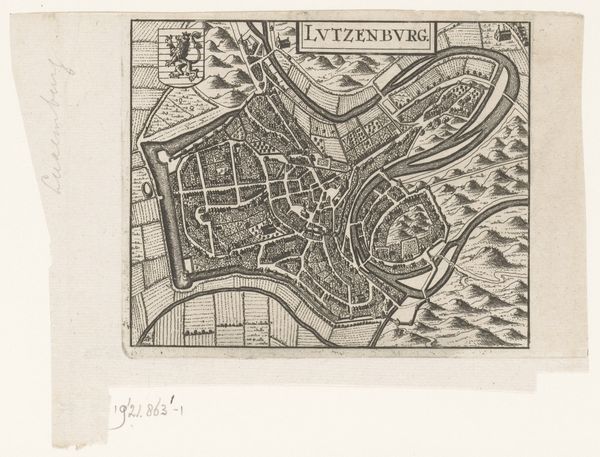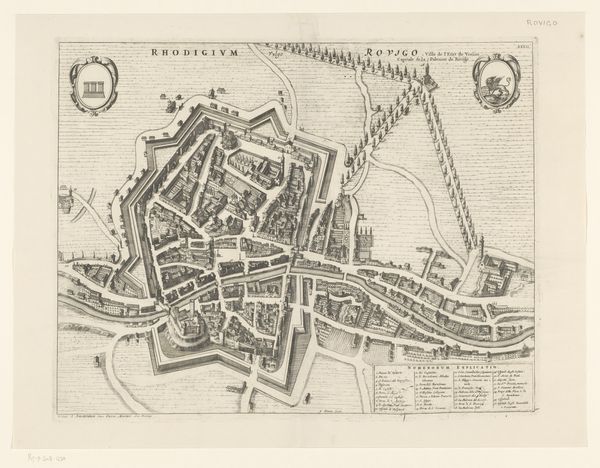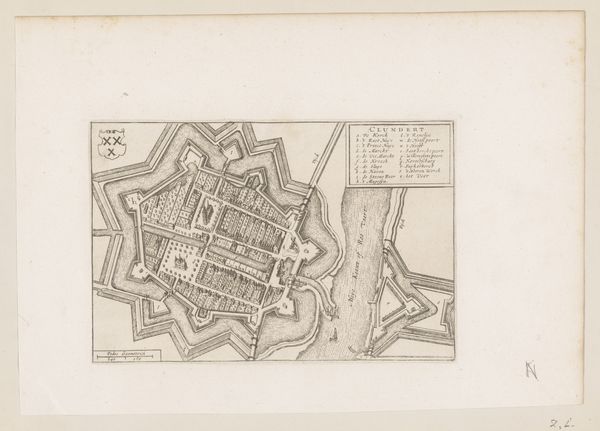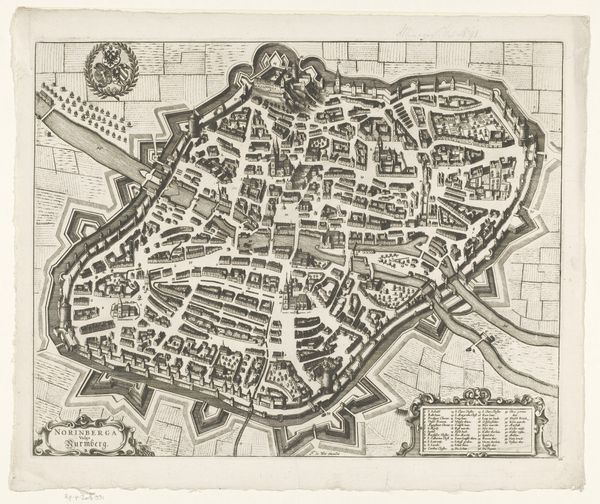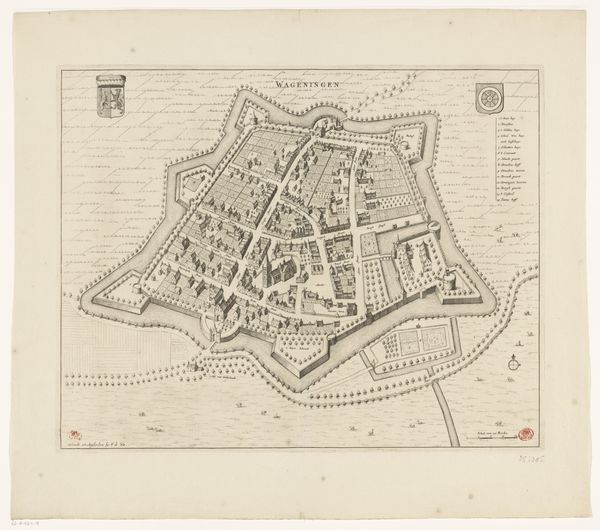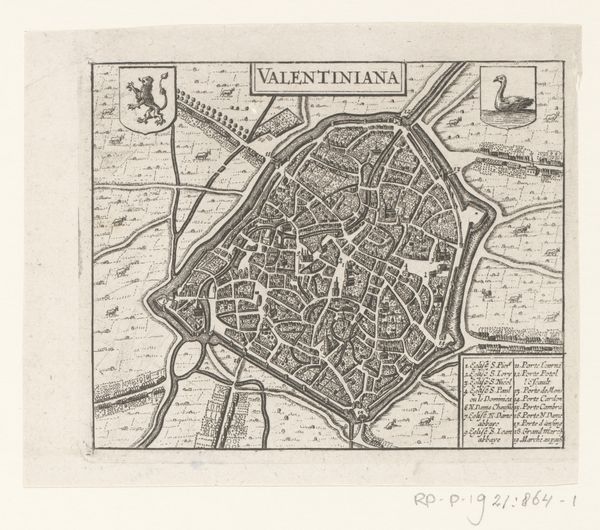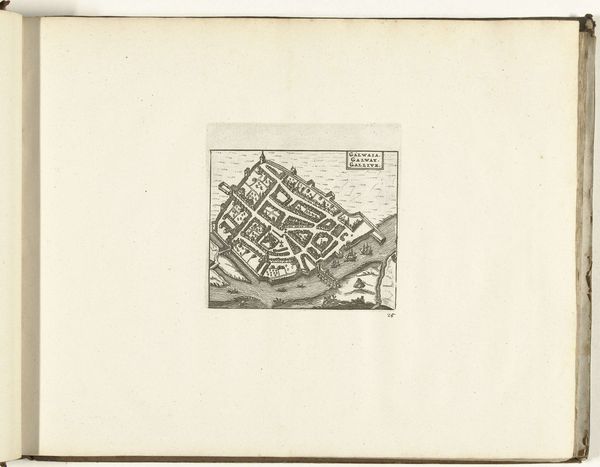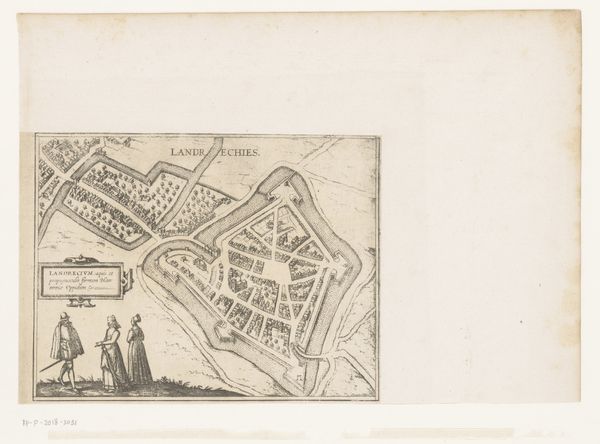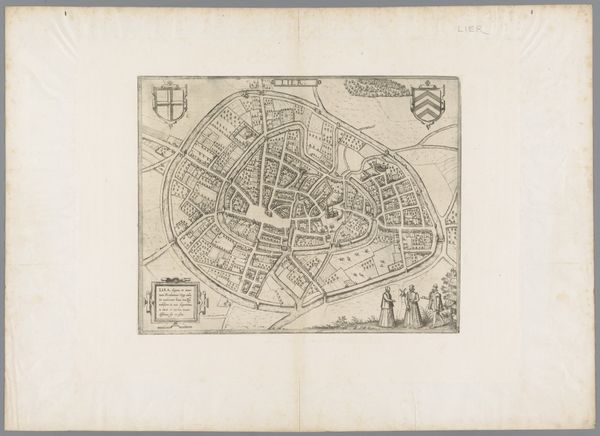
drawing, print, paper, ink
#
drawing
#
baroque
# print
#
sketch book
#
hand drawn type
#
perspective
#
paper
#
personal sketchbook
#
ink
#
sketchwork
#
ink drawing experimentation
#
ancient-mediterranean
#
pen-ink sketch
#
pen work
#
sketchbook drawing
#
cityscape
#
storyboard and sketchbook work
#
sketchbook art
Dimensions: height 344 mm, width 322 mm
Copyright: Rijks Museum: Open Domain
This is Frans Hogenberg’s "Plattegrond van Ieper," a map of Ypres made using engraving, sometime between 1540 and 1590. Engraving is an exacting method, requiring the artist to incise an image into a metal plate, which is then inked and printed. The result is a dense network of lines, a testament to the labor involved. Look closely, and you'll see that Hogenberg used the technique to full effect. Every building, street, and fortification is meticulously rendered. The level of detail speaks to the importance of accurate representation in a time of political and religious upheaval. The print's sharp lines and tonal range are inherent to the process of engraving. The medium lends itself to detailed replication. In Hogenberg's time, printed maps were essential tools for trade, military strategy, and urban planning. Beyond its aesthetic qualities, this print offers insight into the complex relationship between art, labor, and the rise of the modern state. It reminds us that even seemingly straightforward images are products of skillful making, embedded in social context.
Comments
No comments
Be the first to comment and join the conversation on the ultimate creative platform.
